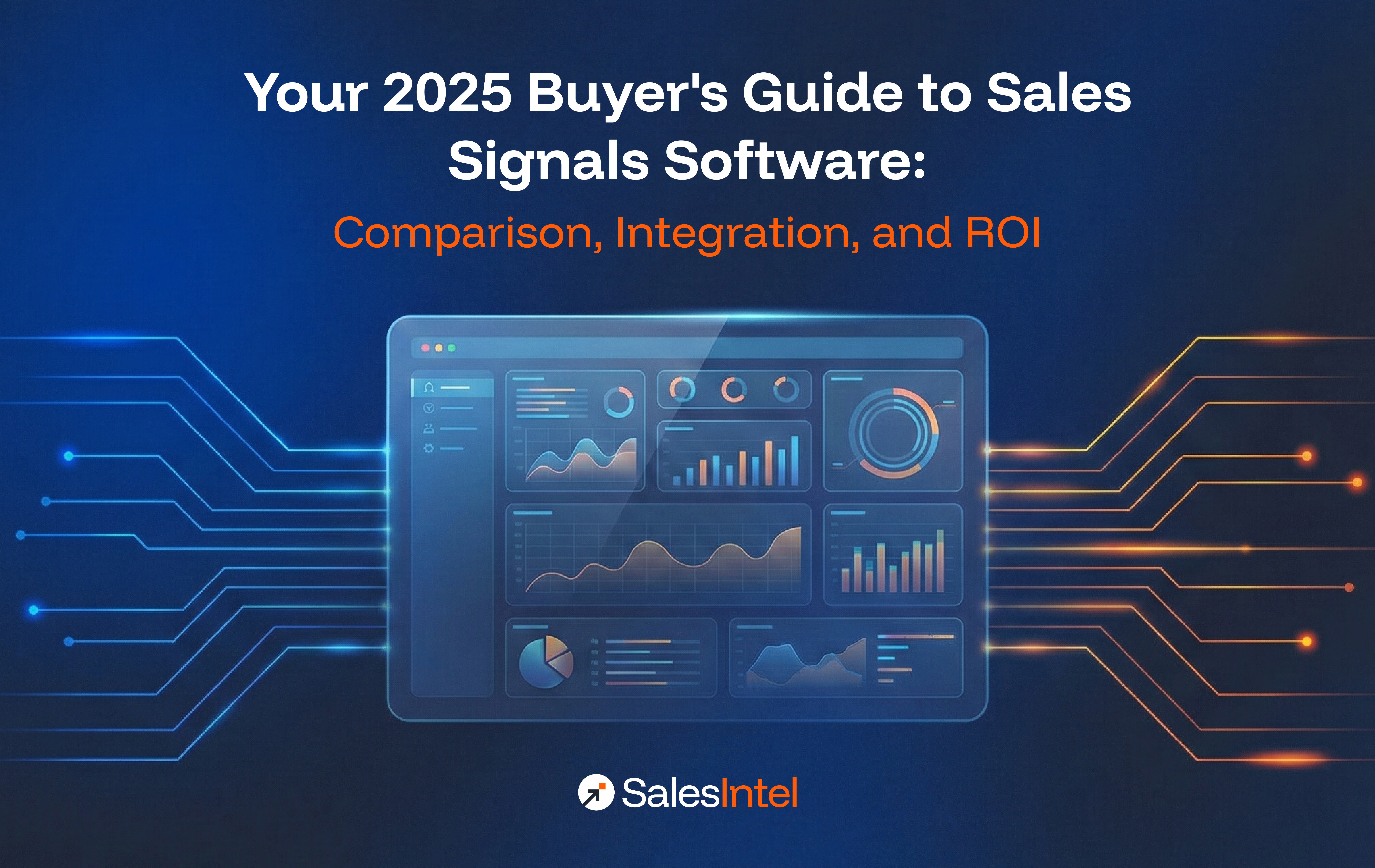You need targeted marketing strategies to effectively reach your desired audience, increase sales, and establish lasting customer relationships.
One of these strategies is lead segmentation.
Your potential customers come from various backgrounds and have different needs. And as they progress through the sales funnel, their needs will evolve.
Lead segmentation will help you deliver the right messages to these prospects and address their specific needs at each stage of the customer journey.
In this guide, we’ll cover the different types of lead segmentation and strategies to help you create campaigns that boost engagement and sales.
What is Lead Segmentation?
Lead segmentation refers to grouping potential customers into smaller categories based on specific criteria. The criteria could be anything like their age, location, interests, or how they interact with your business.
Other names for lead segmentation include customer segmentation, market segmentation, and audience segmentation.
Why is Lead Segmentation Important?
Lead segmentation helps you tailor your sales and marketing efforts more effectively.
In other words, it enables you to engage consumers with personalized marketing messages that resonate with them, increasing your chances of converting them into repeat customers. According to Twilio Segment, 56% of shoppers say they’ll become repeat buyers after getting a personalized experience.
Similarly, when you understand the specific characteristics and behaviors of your lead segments, you can use your resources more efficiently. You’ll be able to create products that address the specific needs of each group and ultimately see better results from your marketing campaigns.
Moreover, you’ll earn your customers’ trust and loyalty, which not only boosts your immediate sales but also fosters long-term relationships.
Types of Lead Segmentation
Most brands use various factors to segment their audiences. So, there’s no one right or wrong way of segmenting your leads.
However, here are five common types of lead segmentation that most businesses use:
1. Behavioral Segmentation
Behavioral segmentation is how you group leads based on their interaction with your brand.
For instance, suppose you operate a wholesale book distribution company catering to retailers. In this case, you can segment your clients based on their order history or the specific demands of their customer base.
You can then send exclusive offers or personalized recommendations to retail bookstores that frequently order specific genres or authors.
HubSpot is a classic example of a platform that effectively uses behavioral segmentation.

Image source: HubSpot
The company, known for its inbound marketing, sales, and service software, segments its customers based on their interaction with its platform.
The segmentation is based on various customer behaviors, such as:
- How frequently they use different features of the HubSpot software.
- The type of content they consume on the HubSpot blog or learning academy.
- Their engagement level with emails or webinars.
As a result, HubSpot tailors its marketing efforts, customer service, and product development to meet the specific needs and interests of different business segments.
For instance, a business that frequently uses marketing automation features might receive more targeted content related to advanced marketing strategies. In contrast, a company that primarily uses the CRM tool might get more information on sales best practices.
This approach helps HubSpot provide more relevant and personalized experiences to its B2B customers, which ultimately drives business growth.
2. Demographic Segmentation
In demographic segmentation, you group people based on statistical characteristics that can influence their buying behavior and product preferences. These factors include age, gender, and income.
For instance, a cosmetics manufacturer might segment its offerings by the age group of its business clients. This could involve creating specialized skincare products for businesses that mainly serve teenagers and products specifically designed for seniors.
LinkedIn is a brilliant example of a brand that effectively uses demographic segmentation.

Image source: LinkedIn
As a professional networking platform, LinkedIn provides various solutions tailored to different business needs, and demographic segmentation plays a key role in this.
LinkedIn segments its B2B clients based on various demographic factors such as company size and employees’ job roles. This way, they’re able to offer different marketing and hiring solutions to small businesses compared to large enterprises.
For instance, a small startup might be more interested in LinkedIn’s tools for reaching potential hires and growing its brand presence. In contrast, a large multinational corporation might leverage LinkedIn’s advanced analytics and broad advertising capabilities to target a global audience.
Moreover, LinkedIn’s segmentation extends to industry-specific solutions. A tech company’s talent acquisition and branding needs will differ significantly from those of a manufacturing firm. LinkedIn’s platform accommodates these differences through targeted content, ads, and recruitment tools.
As a result, LinkedIn is able to offer more relevant services, which helps enhance client satisfaction and engagement on the platform.
3. Geographic Segmentation
Geographic segmentation refers to dividing customers based on location. It can be as broad as grouping by country and continent or as specific as neighborhoods and zip codes. The idea is to tailor your products and marketing efforts to fit the unique characteristics, needs, and preferences of people in different geographic areas.
For instance, a company that specializes in distributing clothing to retailers might use geographic segmentation to cater to different regional needs.
In areas with colder climates, they’d supply a large inventory of winter wear, such as coats and heavy sweaters, to local retail stores. On the other hand, in regions with tropical climates, their focus might shift to offering a greater variety of lighter clothing options, like shorts, T-shirts, and summer dresses.
Cisco is a prime example of a brand that effectively uses geographic segmentation.

Image source: Cisco
The company tailors its product offerings to different geographic regions based on local market needs, regulatory environments, and technological infrastructure.
For example, in well-developed markets like North America and Western Europe, Cisco focuses on advanced networking solutions and services that support complex IT infrastructures, cloud computing, and cybersecurity. These regions often have complex technological needs and regulatory requirements that Cisco’s advanced solutions can address.
In emerging markets like parts of Africa, Latin America, or Southeast Asia, Cisco emphasizes more basic networking infrastructure and cost-effective solutions. These regions often require robust and scalable solutions that can be deployed in less developed IT environments, and Cisco adapts its offerings accordingly.
4. Psychographic Segmentation
Psychographic segmentation is a marketing segmentation type that categorizes leads based on traits such as social status, personality, and lifestyle.
For instance, a fitness equipment company might segment its target market into two psychographic groups. The first group could include businesses like high-end gyms that cater to fitness enthusiasts deeply invested in intense workouts. These companies would likely be interested in advanced, high-performance equipment for their customers.
The second group could be businesses like hotels that offer fitness facilities as an additional service to their guests. The equipment company can provide lifestyle-oriented fitness products like user-friendly gear and wellness programs.
IBM is an excellent example of a company that segments its customers based on psychographic traits. The brand specializes in various technology products and services, including cloud computing, artificial intelligence (AI), and cybersecurity.

Image source: IBM
The company segments its clients based on their organizational culture, decision-making processes, and attitudes toward innovation and digital transformation.
For example, it targets forward-thinking companies that are early adopters of technology with its cutting-edge AI and cloud solutions. They emphasize how these technologies can drive business transformation and competitive advantage.
For more conservative companies that prioritize stability and security, IBM focuses on its strong track record of reliability, comprehensive security features, and integration with existing legacy systems.
This way, IBM effectively communicates the value of its products and services and aligns them with the different characteristics of its diverse customer base.
5. Needs-Based Segmentation
Needs-based segmentation is when you group leads based on their specific needs and problems that your product or service can solve.
Rather than focus on who they are (like in demographic segmentation) or their lifestyle (as in psychographic segmentation), you zero in on what they need and how your offering can meet those needs.
For example, let’s say you run a software company that offers a project management tool. You could segment your market in the following ways:
- Small business owners: They may need basic project management features, ease of use, and affordability.
- Large enterprises: This segment might want advanced features like integration with other systems, robust data security, and scalability.
- Freelancers: They might be looking for flexibility, mobile accessibility, and cost-effective solutions.
Adobe is a great example of a brand that effectively uses needs-based segmentation.

Image source: Adobe
The multinational software company groups its customers based on the following:
- Organizations: Adobe targets businesses with products like Adobe Acrobat for PDF creation and Adobe Marketing Cloud for digital marketing needs.
- Professional graphic designers: For this group, Adobe offers advanced software like Photoshop, Illustrator, and InDesign. These products have features professionals need for high-end graphic design, photo editing, and publishing.
- Video producers and filmmakers: For those in video production, Adobe provides Premiere Pro and After Effects, which offer sophisticated video editing and production capabilities.
By grouping its customers based on their distinct needs, Adobe successfully offers tailored solutions for each segment.
How To Create a Lead Segmentation Strategy
Let’s now look at how you can successfully implement lead segmentation systems in your business.
1. Choose the Tools You Need To Segment Your Leads
Creating an effective lead segmentation strategy starts with selecting the right tools. These platforms will help you gather, analyze, and act on data about your leads.
Each of these tools brings something unique to the table. But when combined, they give you a comprehensive view of your prospects, which enables you to segment them effectively and tailor your marketing efforts to meet their specific needs.
That being said, here’s a rundown of the platforms you need:
Customer Relationship Management Software (CRM)
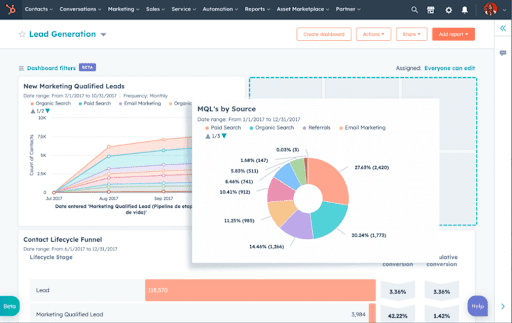
Image source: HubSpot
Your CRM is the cornerstone of lead segmentation. It lets you track interactions, sales, and engagement with each prospect.
For that reason, look for a AI-powered CRM that offers detailed tracking and segmentation features. It should allow you to categorize leads based on various criteria like demographics, interaction history, purchase behavior, and more.
Marketing Automation Tools
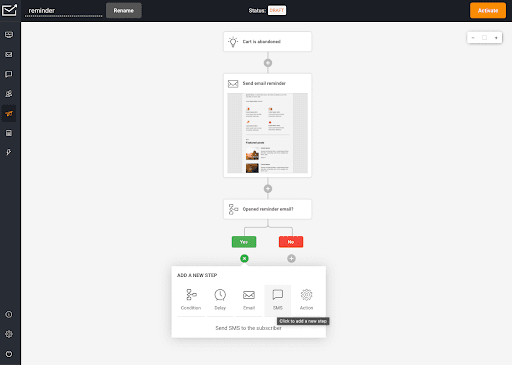
Image source: Sender
According to the Litmus State of Email Report, 56% of companies use automation to segment their leads.
Marketing automation tools work hand-in-hand with your CRM platform. They help you send personalized messages, manage email campaigns, and track engagement.
Therefore, choose a tool that integrates seamlessly with your CRM and can automate responses based on the specific behaviors of your segments.
High-Converting Popups and Forms
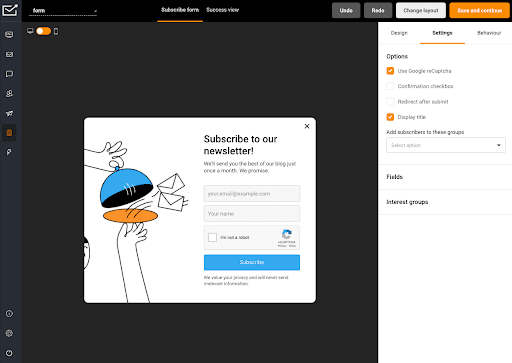
Image source: Sender
Popups and forms help you collect information from your leads on your website. You can use them to capture essential customer data like email addresses, company names, or other relevant details. This data can then be stored in a database warehouse for easy access and analysis by your team.
Survey Tools
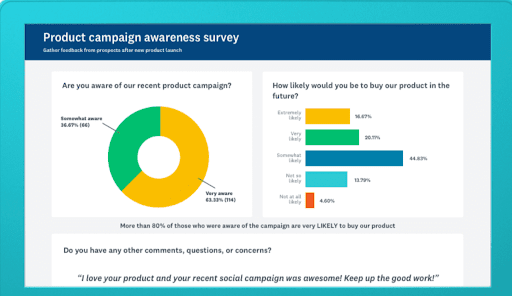
Image source: SurveyMonkey
Sometimes, the best way to understand your leads is to simply ask them. And the best way to do so is through surveys and interviews.
Use survey tools like SurveyMonkey or Typeform to gather insights directly from your prospects. This will help you understand their needs and pain points more clearly so you can fine-tune your segmentation strategy.
Analytics Tools
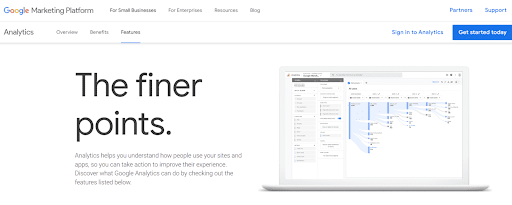
Image source: Google Analytics
Tools like Google Analytics provide valuable data about how leads interact with your website. You can see what content they engage with and which pages they visit and adjust your strategies accordingly.
2. Research Your Target Audience and Create Buyer Personas
Once you pick the right tools for your business, conduct research to find patterns in customer preferences and behavior. You can use market reports, website analytics, social media insights, and feedback from existing customers.
With the data from this research, develop the buyer personas that reflect the typical customers you want to target. For instance, you might have a persona like “Startup Steve,” a young entrepreneur looking for cost-effective business solutions. Or “Corporate Carla,” a mid-level manager seeking efficient and scalable tools for her team.
Here’s an excellent example of a buyer persona:
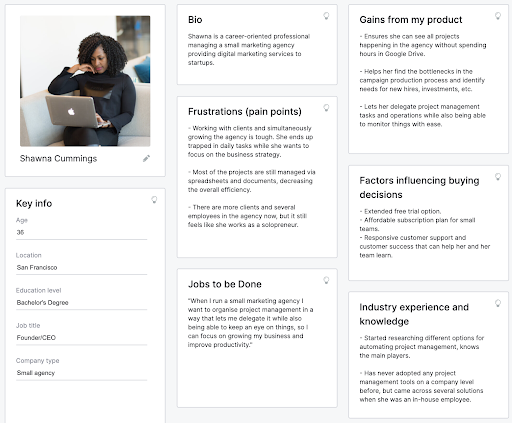
Image source: Semrush
3. Create Marketing Campaigns That Resonate With Leads
After developing your buyer personas, the next step is to group leads that fall into each persona based on their preferences, needs, or behavior.
Use the different marketing segmentation types to divide those prospects into specific groups. Then, send relevant, personalized marketing emails to each category.
GetResponse’s Email Benchmarks report shows that personalized emails have higher open (30.26%) and click-through rates (26.55%) than non-personalized emails.

Image source: GetResponse
Conclusion
Segmenting your leads helps you understand why they choose to do business with you. This lets you tailor your marketing messages to resonate with them so you can stay ahead of your competitors.
With the segmentation strategies above, you can enhance your marketing efficiency, improve customer engagement, and drive significant growth for your business.
About Author –
Victoria Paskau is an outreach specialist who thrives on turning cold emails into warm connections. When not crafting outreach strategies, she’s diving deep into the latest industry trends to ensure she’s always ahead of the curve.


